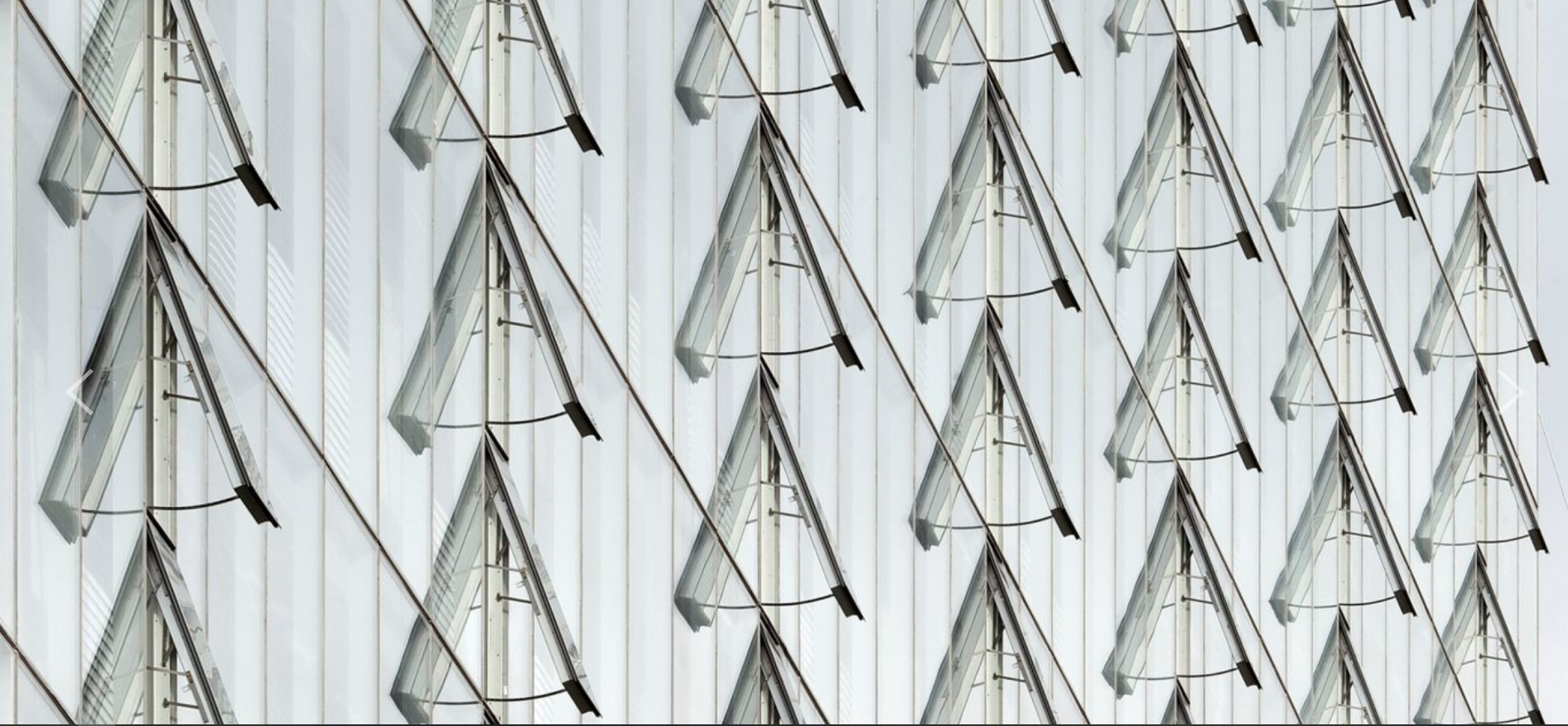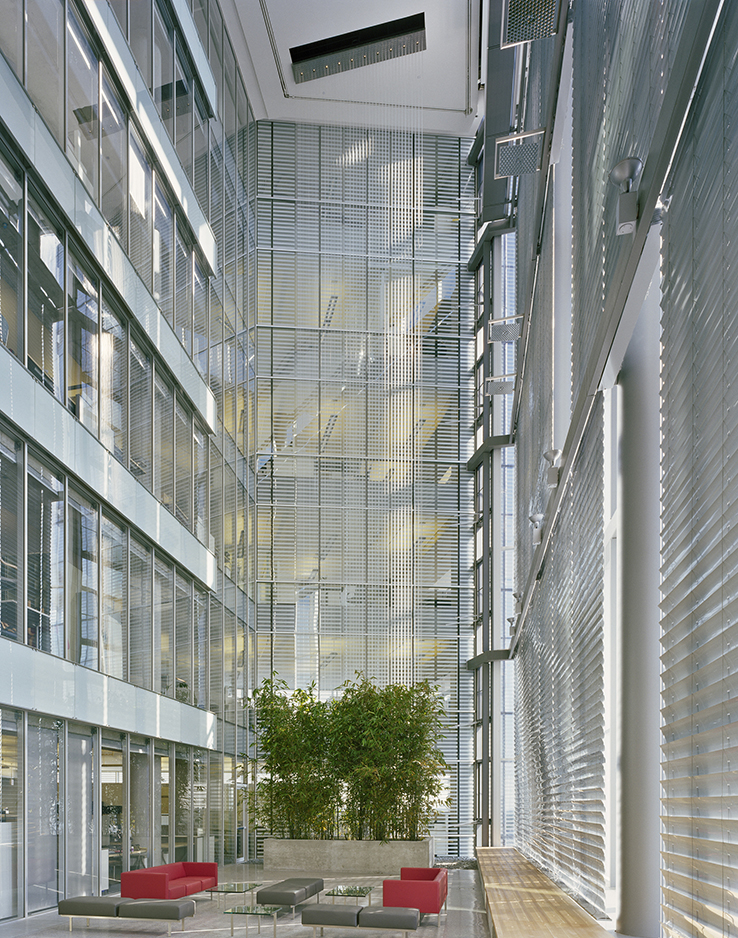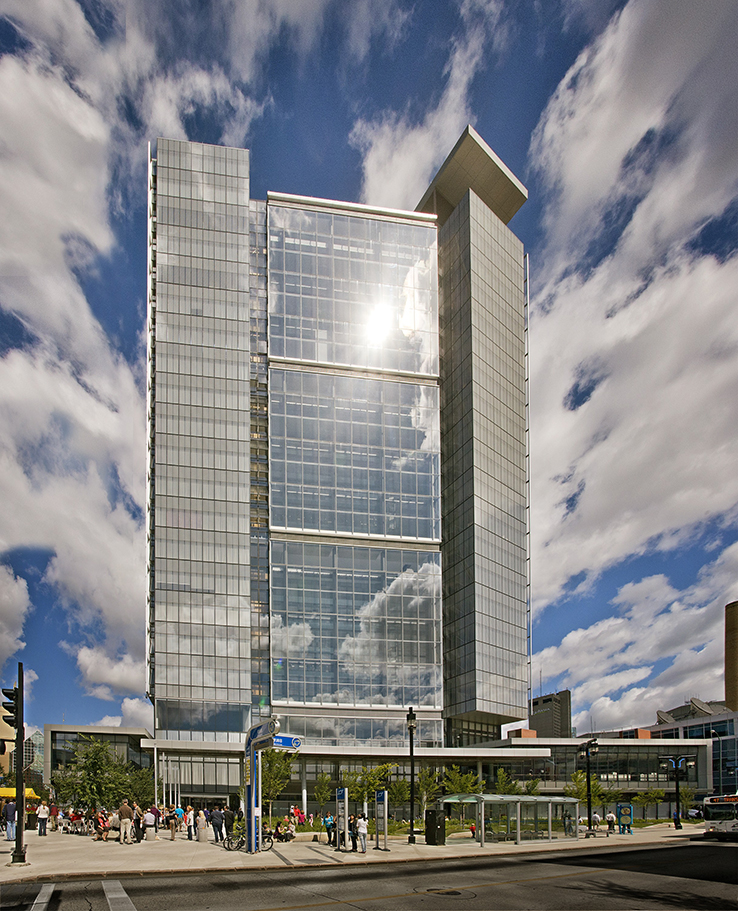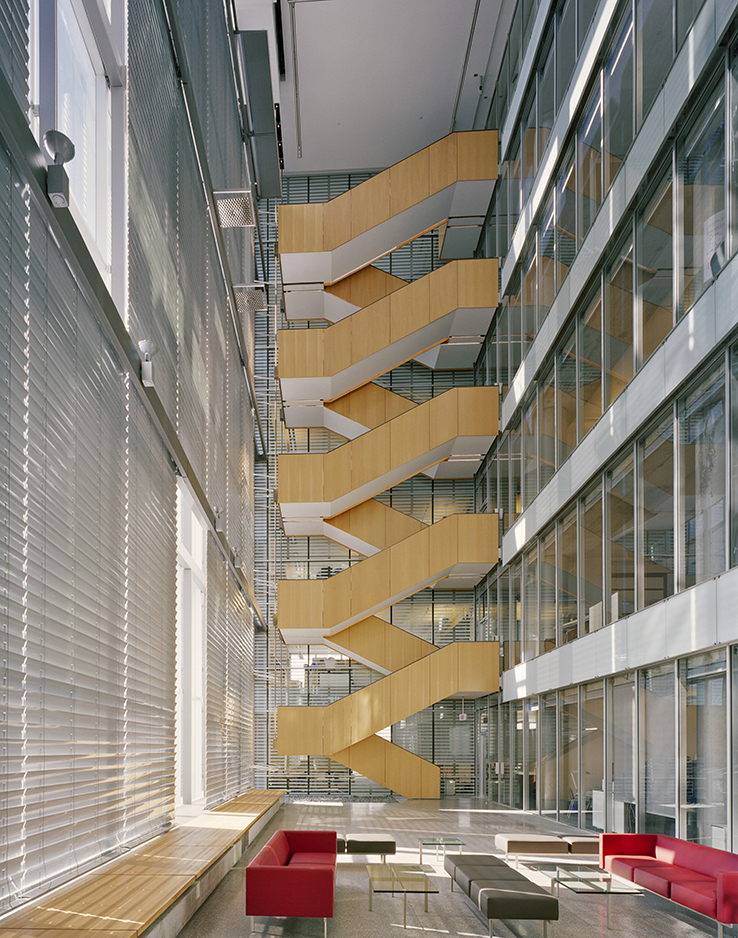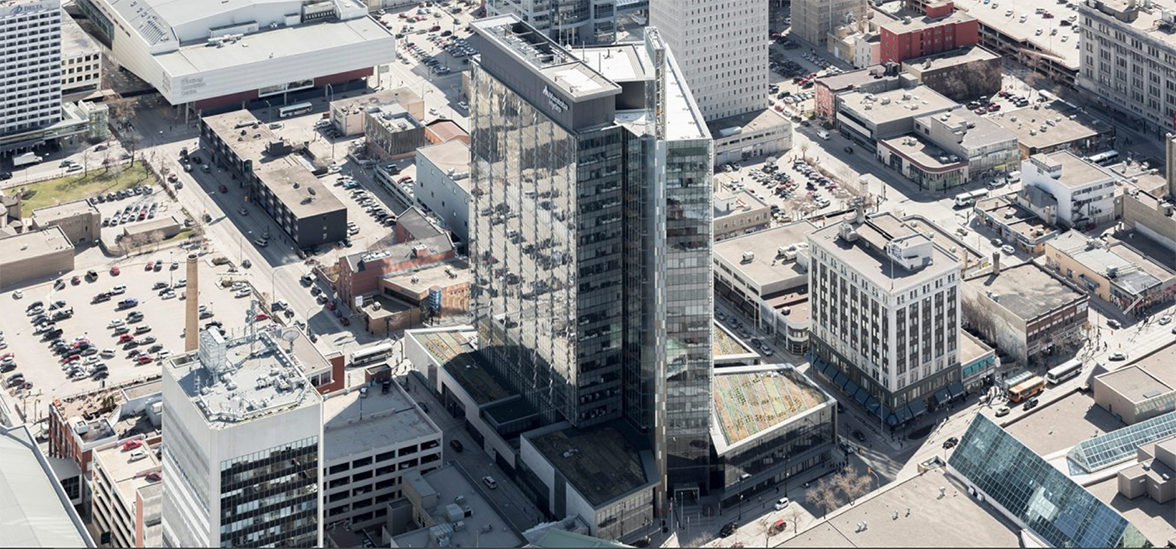Description:
Upon first glance, Manitoba Hydro Place, located in downtown Winnipeg, appears to be a deceptively simple Class A glass office tower. In actuality it is one of North America’s most complex energy-efficient large-scale buildings and a model for bioclimatic architecture in an extreme climate. The 700,000-square-foot design harmonizes time-tested sustainable strategies with advanced technologies to harness maximum passive energies.
Planning began in 2002, a year before Architecture 2030 was founded and three years before Al Gore’s Inconvenient Truth (2006) galvanized the world to take responsibility for climate change. Recognizing LEED was not structured to prioritize major energy savings, and to make a visible demonstration of its commitment to energy reduction, Manitoba Hydro set ambitious goals for its new building to achieve 60% above the Model National Energy Code for Buildings (MNECB). In addition, it had to provide a healthy work environment for 2,000+ employees, be filled with 100% fresh air, participate in the city’s urban revitalization strategy, and demonstrate fiscal responsibility within the framework of architectural excellence. And it had to do this in an extreme climate where temperatures typically fluctuate from -30°F (-35°C) to +95°F (35°C) over the year. In addition, Winnipeg, once known as the “Chicago of the North,” is notorious for its ailing civic life in the downtown. To achieve these ambitions, the client mandated a formal Integrated Design Process and dedicated two full years to design and development. [1]
Manitoba Hydro Place, the game-changing headquarters designed to meet the extremely challenging objectives of the fourth-largest energy utility in Canada, has been granted LEED Platinum certification for sustainability, exceeding its original goal to achieve LEED Gold. Remarkably, this is the first and only large office tower in Canada to date to receive the LEED Platinum certification from the Canada Green Building Council (CaGBC).
Opened in 2009, the 22-storey building occupying a full city block in Winnipeg’s downtown is the achievement of the Integrated Design Process involving close collaboration between Manitoba Hydro and design architects Kuwabara Payne McKenna Blumberg Architects (Toronto), executive architects Smith Carter Architects and Engineers (Winnipeg), and climate engineers Transsolar (Stuttgart).
“The Canada Green Building Council would like to congratulate those who worked on Manitoba Hydro Place for helping it receive LEED Platinum – the highest and most rigorous level of certification that can be achieved,” said Thomas Mueller, President & CEO of the CaGBC. “In order to meet such a high standard, the design team had to take the extra step and look at innovative design and construction strategies. This resulted in exceptional energy performance.” [2]
References:
[1] “Manitoba Hydro Place.” Canadian Architect, April 30, 2011. https://www.canadianarchitect.com/manitoba-hydro-place/.
[2] “Manitoba Hydro PLACE Sets New Record WITH LEED Platinum.” Canadian Architect, May 25, 2012. https://www.canadianarchitect.com/manitoba-hydro-place-sets-new-record-with-leed-platinum/.
Additional information:
“360 Portage.” Winnipeg Architecture Foundation. Accessed August 30, 2021. https://www.winnipegarchitecture.ca/360-portage-avenue/.
“Manitoba Hydro PLACE.” Architecture49. Accessed August 30, 2021. https://architecture49.com/en/portfolio/projects/manitoba-hydro-place/.
“Manitoba Hydro PLACE.” KPMB, April 23, 2020. https://www.kpmb.com/project/manitoba-hydro-place/.
“Manitoba Hydro PLACE.” prairie architects inc. Accessed August 30, 2021. https://www.prairiearchitects.ca/manitoba-hydro-place.
Saieh, Nico. “Manitoba Hydro / KPMB Architects.” ArchDaily. ArchDaily, December 24, 2009. https://www.archdaily.com/44596/manitoba-hydro-kpmb-architects.
Project Title: Manitoba Hydro Place
Artists: KPMB Architects
Year: 2009
Place: Winnipeg, Manitoba
Architecture, City, Completed Projects, Functional, LEED, LEED Platinum, MAN, Manitoba, MB, Multi Use, Permanent, Private, Urban

